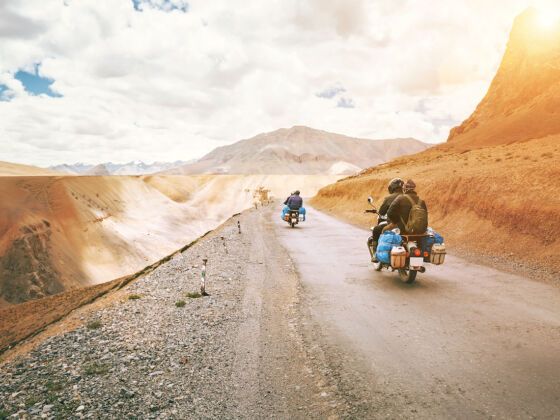THE ROAD FROM Manali (Himachal Pradesh) to Leh (Ladakh), cutting through the Indian Himalayas, is one of the world’s highest motorable roads. The classic method of travel is on a Royal Enfield motorbike.
The Enfield, an originally British bike still manufactured in the Enfield Factory in the Indian city of Chennai, is the perfect vehicle for this route: it’s a dinosaur, but it knows how to handle the rough spots.
